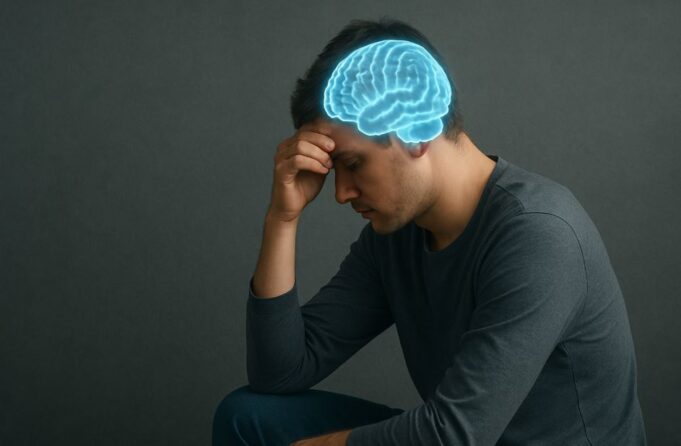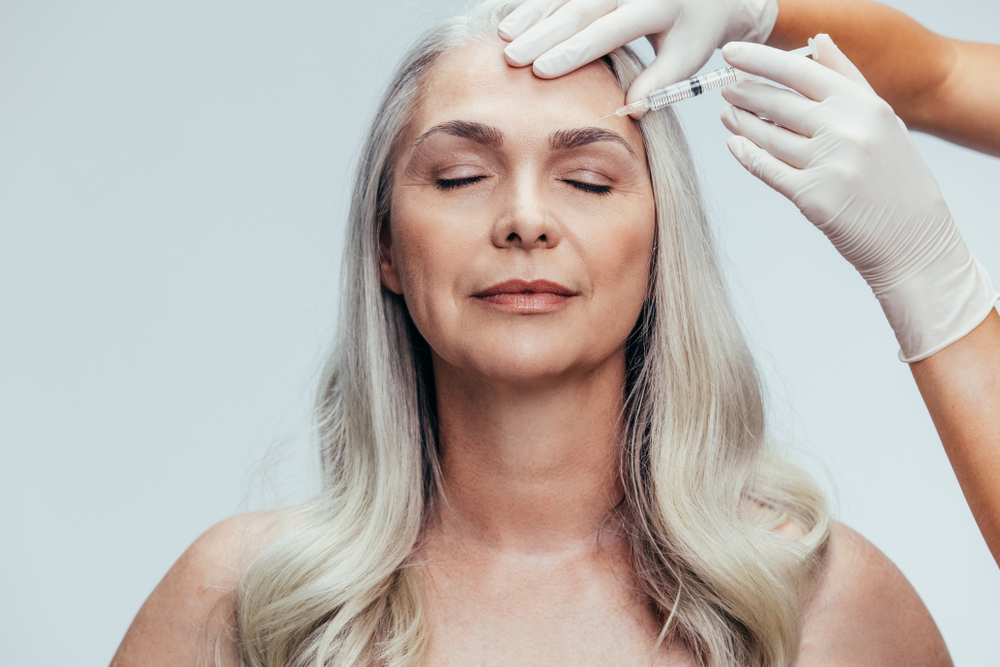It left an indelible mark on global health.
Almost like Voldemort, it’s the thing we don’t like to speak of…
COVID-19
Now, research reveals its impact extends far beyond the virus itself and it’s worse than we thought.
A groundbreaking study from the University of Nottingham shows that the pandemic accelerated brain aging by an average of 5.5 months—even among people who never contracted the virus.
This finding challenges our understanding of how global crises affect neurological health. The study analyzed brain scans from nearly 1,000 participants in the UK Biobank study, comparing pre-pandemic and post-pandemic data to measure changes in brain structure and function.
The implications are profound. Isolation, uncertainty, economic stress, and disrupted routines didn’t just affect our mental health temporarily—they may have physically altered our brains in measurable ways.
How Researchers Measured Pandemic Brain Aging
The University of Nottingham team used sophisticated brain aging models trained on data from over 15,000 healthy individuals. These models can predict a person’s age based solely on brain scan images by analyzing structural changes that naturally occur over time.
When researchers applied these models to pandemic-era brain scans, they discovered something unexpected. The scans taken after people had lived through the crisis showed accelerated aging patterns equivalent to 5.5 additional months of normal brain aging.
Dr. Ali-Reza Mohammadi-Nejad, who led the study, expressed surprise at the findings: “What surprised me most was that even people who hadn’t had Covid showed significant increases in brain ageing rates. It really shows how much the experience of the pandemic itself, everything from isolation to uncertainty, may have affected our brain health.”
The research methodology was robust. Half the participants had brain scans before the pandemic, while the other half had scans both before and after the global health crisis. This design allowed researchers to directly compare brain changes over time and isolate the pandemic’s impact.
Who Was Most Affected by Pandemic Brain Aging
The study revealed significant disparities in how different groups experienced pandemic-related brain aging. Three populations showed more pronounced effects:
Men experienced greater brain aging acceleration than women. This finding aligns with other research showing men faced higher rates of severe COVID-19 outcomes and may have experienced different stress responses during the pandemic.
Older adults showed more dramatic changes. While concerning, this pattern follows established research on brain resilience. Younger brains typically demonstrate greater neuroplasticity and may recover more readily from stress-induced changes.
People from deprived socioeconomic backgrounds faced the most severe brain aging effects. This disparity reflects the unequal burden of pandemic stressors—job loss, housing instability, limited healthcare access, and higher infection rates in essential worker roles.
These findings highlight how major societal disruptions can exacerbate existing health inequalities. The pandemic didn’t affect everyone equally, and neither did its neurological consequences.
The Stress-Brain Connection During Crisis
Understanding why pandemic stress physically aged our brains requires examining how chronic stress affects neurological function. Extended periods of uncertainty, isolation, and fear trigger sustained activation of stress response systems.
Chronic stress floods the brain with cortisol and other stress hormones. Over time, these chemicals can damage brain structures, particularly areas involved in memory formation and emotional regulation like the hippocampus and prefrontal cortex.
The pandemic created a perfect storm of brain-aging stressors:
Social isolation disrupted normal cognitive stimulation and emotional support networks. Human brains evolved for social connection, and prolonged isolation can accelerate cognitive decline.
Uncertainty and fear kept stress response systems chronically activated. The constant threat of infection, economic instability, and changing restrictions prevented normal stress recovery cycles.
Disrupted routines eliminated many activities that support brain health—regular exercise, social activities, novel experiences, and structured daily patterns.
Sleep disruption became widespread during the pandemic. Poor sleep quality directly impacts brain health and accelerates aging processes.
Professor Dorothee Auer, professor of neuroimaging and senior author on the study, emphasized the environmental aspect: “This study reminds us that brain health is shaped not only by illness, but by our everyday environment. The pandemic put a strain on people’s lives, especially those already facing disadvantage.”
Cognitive Performance Changes Beyond Brain Structure
The research extended beyond structural brain changes to examine functional impacts. Participants who contracted COVID-19 showed measurably worse cognitive performance on tests administered after the pandemic compared to their pre-pandemic baseline.
This cognitive decline appeared independent of the structural brain aging effects observed in the broader population. It suggests that COVID-19 infection carries additional neurological risks beyond the general pandemic experience.
The cognitive testing results support growing evidence of “long COVID” neurological symptoms. Many COVID survivors report persistent brain fog, memory problems, and concentration difficulties months after infection.
However, the study’s most significant finding remains that even uninfected individuals showed measurable brain aging acceleration. This suggests the pandemic’s psychological and social impacts were sufficient to cause physical neurological changes.
Long-Term Implications and Recovery Potential
The discovery of pandemic-induced brain aging raises important questions about long-term neurological health. Will these changes persist, or can the brain recover as life returns to normal?
Professor Auer offered cautious optimism: “We can’t yet test whether the changes we saw will reverse, but it’s certainly possible, and that’s an encouraging thought.”
Brain plasticity research supports the possibility of recovery. The adult brain retains remarkable capacity for adaptation and healing throughout life. Positive lifestyle changes can promote neurogenesis (new brain cell growth) and strengthen neural connections.
Several factors may support brain recovery post-pandemic:
Restored social connections can provide cognitive stimulation and emotional support that promote brain health.
Return to regular exercise supports neuroplasticity through increased blood flow and growth factor production.
Improved sleep patterns allow the brain to complete essential maintenance and memory consolidation processes.
Reduced chronic stress permits stress response systems to return to normal functioning levels.
Cognitive challenges and new experiences can stimulate brain plasticity and potentially reverse some aging effects.
Protecting Brain Health in Future Crises
The pandemic brain aging findings offer valuable insights for protecting neurological health during future crises or ongoing stress periods.
Maintaining social connections becomes a neurological imperative, not just a mental health recommendation. Virtual connections, while imperfect, can provide some protective benefits when in-person interaction isn’t possible.
Regular exercise emerges as particularly crucial during stressful periods. Physical activity directly supports brain health through multiple mechanisms and can buffer against stress-induced aging.
Sleep hygiene practices become even more important during crisis periods. Prioritizing consistent sleep schedules and creating restful environments supports brain resilience.
Stress management techniques—meditation, deep breathing, progressive muscle relaxation—aren’t just helpful for immediate well-being. They may provide direct neuroprotective benefits.
What This Means for Public Health Policy
The research findings have significant implications for how societies prepare for and respond to future health crises. Brain health considerations should be integrated into pandemic response planning alongside traditional public health measures.
Mental health support systems need expansion and integration with neurological health monitoring. The study suggests psychological interventions during crises may have measurable neuroprotective effects.
Addressing socioeconomic disparities becomes not just a matter of social justice but neurological equity. The finding that disadvantaged populations experienced worse brain aging effects underscores the need for targeted support during crises.
Future pandemic responses might benefit from specific interventions designed to minimize neurological impacts—structured social connection programs, stress reduction initiatives, and cognitive stimulation activities.
Moving Forward with Brain Health Awareness
The COVID-19 pandemic taught us many lessons about resilience, adaptation, and the interconnected nature of physical and mental health. The discovery that pandemic stress physically aged our brains adds another dimension to this understanding.
This research doesn’t aim to alarm but to inform. Understanding how major stressors affect brain health empowers individuals and communities to take protective action during future challenges.
The brain’s remarkable plasticity offers hope for recovery and future resilience. By prioritizing brain health through social connection, physical activity, stress management, and cognitive engagement, we can work to reverse pandemic-related changes and build stronger neurological foundations for the future.
As we continue to understand the pandemic’s full impact on human health, studies like this remind us that healing involves not just recovering from illness but addressing the broader ways crisis shapes our biology. The path forward involves both individual action and collective commitment to supporting brain health across all communities.













